- Home
- Quizzes
- My Quiz Activity
- Newsletters
- Sports Betting
- MY FAVORITES
- Add Sports/Teams
- SPORTS
-
NFL
- NFL Home
- Arizona Cardinals
- Atlanta Falcons
- Baltimore Ravens
- Buffalo Bills
- Carolina Panthers
- Chicago Bears
- Cincinnati Bengals
- Cleveland Browns
- Dallas Cowboys
- Denver Broncos
- Detroit Lions
- Green Bay Packers
- Houston Texans
- Indianapolis Colts
- Jacksonville Jaguars
- Kansas City Chiefs
- Las Vegas Raiders
- Los Angeles Chargers
- Los Angeles Rams
- Miami Dolphins
- Minnesota Vikings
- New England Patriots
- New Orleans Saints
- New York Jets
- New York Giants
- Philadelphia Eagles
- Pittsburgh Steelers
- San Francisco 49ers
- Seattle Seahawks
- Tampa Bay Buccaneers
- Tennessee Titans
- Washington Commanders
-
MLB
- MLB Home
- Arizona Diamondbacks
- Atlanta Braves
- Baltimore Orioles
- Boston Red Sox
- Chicago White Sox
- Chicago Cubs
- Cincinnati Reds
- Cleveland Guardians
- Colorado Rockies
- Detroit Tigers
- Houston Astros
- Kansas City Royals
- Los Angeles Angels
- Los Angeles Dodgers
- Miami Marlins
- Milwaukee Brewers
- Minnesota Twins
- New York Yankees
- New York Mets
- Oakland Athletics
- Philadelphia Phillies
- Pittsburgh Pirates
- San Diego Padres
- San Francisco Giants
- Seattle Mariners
- St. Louis Cardinals
- Tampa Bay Rays
- Texas Rangers
- Toronto Blue Jays
- Washington Nationals
-
NBA
- NBA Home
- Atlanta Hawks
- Boston Celtics
- Brooklyn Nets
- Charlotte Hornets
- Chicago Bulls
- Cleveland Cavaliers
- Dallas Mavericks
- Denver Nuggets
- Detroit Pistons
- Golden State Warriors
- Houston Rockets
- Indiana Pacers
- Los Angeles Clippers
- Los Angeles Lakers
- Memphis Grizzlies
- Miami Heat
- Milwaukee Bucks
- Minnesota Timberwolves
- New Orleans Pelicans
- New York Knicks
- Oklahoma City Thunder
- Orlando Magic
- Philadelphia 76ers
- Phoenix Suns
- Portland Trail Blazers
- Sacramento Kings
- San Antonio Spurs
- Toronto Raptors
- Utah Jazz
- Washington Wizards
-
NHL
- NHL Home
- Anaheim Ducks
- Arizona Coyotes
- Boston Bruins
- Buffalo Sabres
- Calgary Flames
- Carolina Hurricanes
- Chicago Blackhawks
- Colorado Avalanche
- Columbus Blue Jackets
- Dallas Stars
- Detroit Red Wings
- Edmonton Oilers
- Florida Panthers
- Los Angeles Kings
- Minnesota Wild
- Montreal Canadiens
- Nashville Predators
- New Jersey Devils
- New York Islanders
- New York Rangers
- Ottawa Senators
- Philadelphia Flyers
- Pittsburgh Penguins
- San Jose Sharks
- Seattle Kraken
- St. Louis Blues
- Tampa Bay Lightning
- Toronto Maple Leafs
- Vancouver Canucks
- Vegas Golden Knights
- Washington Capitals
- Winnipeg Jets
- NCAAF
- NCAAM
- Boxing
- Entertainment
- Lifestyle
- Golf
- MMA
- Soccer
- Tennis
- Wrestling
- More Sports
- RESOURCES
- My Account
- YB on Facebook
- YB on Twitter
- YB on Flipboard
- Contact Us
- Privacy Policy
- Terms of Service

The 25 most dangerous femmes fatales in film noir
Film noir remains one of the most enduringly popular genres, and many of those from the classic Hollywood era are rightly regarded as classics. It’s easy to see why this would be the case, as noirs so often immerse the viewer (and the characters) in a dark and sinister world where nothing and no one is quite what they seem.
A key fixture in this genre is the figure of the femme fatale, the dangerous woman who, for whatever reason — greed, desire, or ambition — leads the hero astray. Whether she kills the main hero or simply leads him astray, this particular figure epitomizes the genre’s ability to wed together death and desire.
Veda Pierce ('Mildred Pierce')
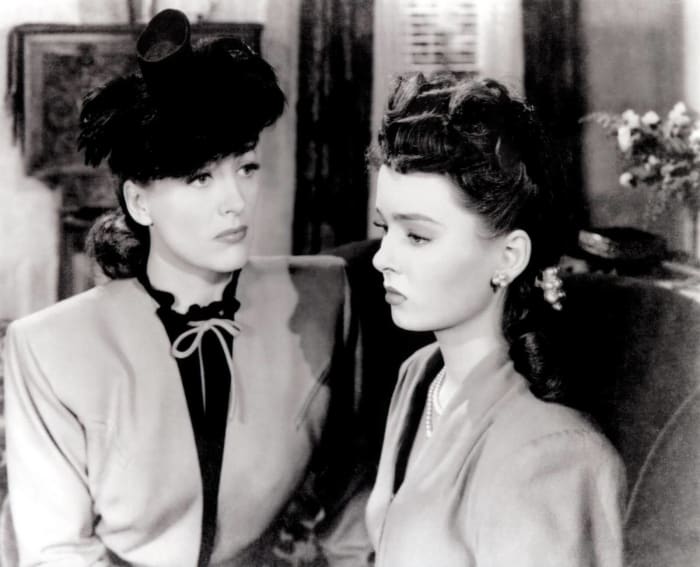
Mildred Pierce marked the triumphant return of Joan Crawford, who stars as the beleaguered title character, a working-class woman who sacrifices her own personal happiness for her daughter, Veda. Unfortunately, Veda is very much a femme fatale, and she constantly looks down and scorns her mother. To add insult to injury, she goes so far as to seduce her mother’s husband, Monte, and when he rejects her, she shoots him with her mother’s gun. Ann Blyth endows Veda with petulant cruelty that is perfect for the role; she is the type of character it’s very easy to hate.
Norma Desmond ('Sunset Boulevard')

Billy Wilder was known for being one of the most talented directors of classic Hollywood, and in Sunset Boulevard, he captures all of the beauty and the ugliness of the studio system. While William Holden’s Joe Gillis is the film's narrator, it’s the femme fatale Norma Desmond (played by the inimitable Gloria Swanson), a faded movie star, who steals the show. Desmond makes Norma into a character of both wrenching pathos and frightening delusion. She slowly descends into a murderous, obsessive madness for both Joe and her lost career, and she turns the film into a powerful reminder of the ruthless nature of Hollywood stardom.
Phyllis Dietrichson ('Double Indemnity')
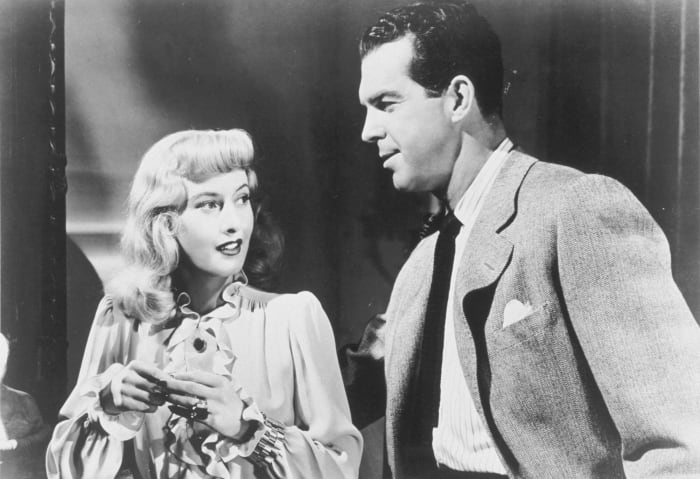
Few femmes fatales are as recognizable as Barbara Stanwyck’s Phyllis Dietrichson, the seductive housewife who ensnares Fred McMurray’s Walter Neff and convinces him to murder her husband in Double Indemnity. Stanwyck endows the character with an icy, steely grace, and the impassive look on her face while Neff strangles her husband in cold blood makes it clear how ruthless and cunning she is. Like so many other dangerous women in noir, she ultimately turns against Neff himself, a reminder, if any were needed, that such murderous figures can never be trusted. Even so, there’s no denying that she is a captivating figure, and she retains her deadly allure.
Annie Laurie Starr ('Gun Crazy')
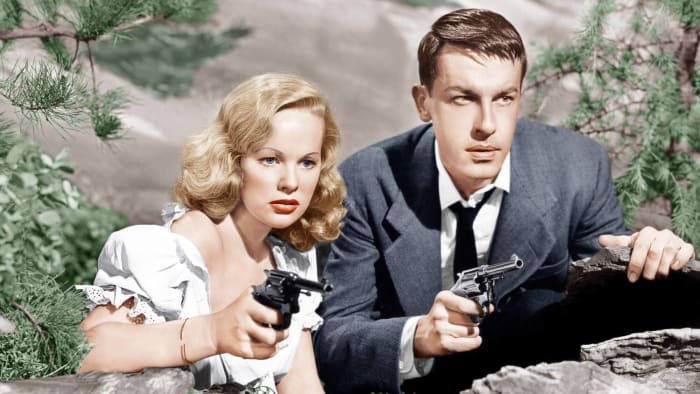
The power of the femme fatale lies in her ability to wrap a man around her little finger, using her sexuality to get him to do things he wouldn’t otherwise do. This is certainly the case in Gun Crazy, which focuses on teenager Bart Tare and his lover, Annie Laurie Starr, who turn to a life of crime after their money runs out. Starr is the quintessential dangerous woman who embodies noir’s tendency to weave together death and desire. In the end, of course, she has to meet her hands at Bart’s hands — so he can be redeemed — before he, too, is shot dead by the police.
Gilda ('Gilda')
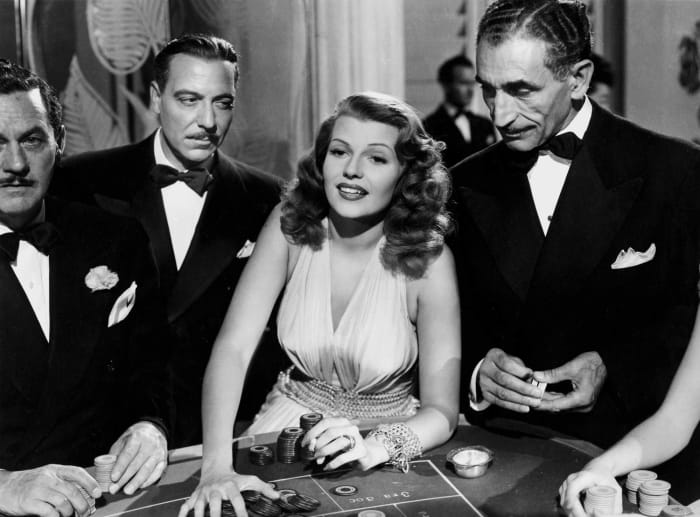
In some ways, Rita Hayworth’s Gilda is the paradigm of the femme fatale. Beautiful and seductive, she radiates glamor and danger. The irony of Gilda, however, is that she doesn’t really do anything bad, per se. Instead, she seems to bring out the very worst in people, including both her nefarious husband, Ballin Mundson, and the man she truly loves, Glenn Ford’s Johnny Farrell. In the eyes of many, however, Hayworth’s character is another paradigmatic example of the femme fatale, and her song and dance number, in which she performs “Put the Blame on Mame” is, in its own way, a proclamation of her own empowerment.
Laura ('Laura')
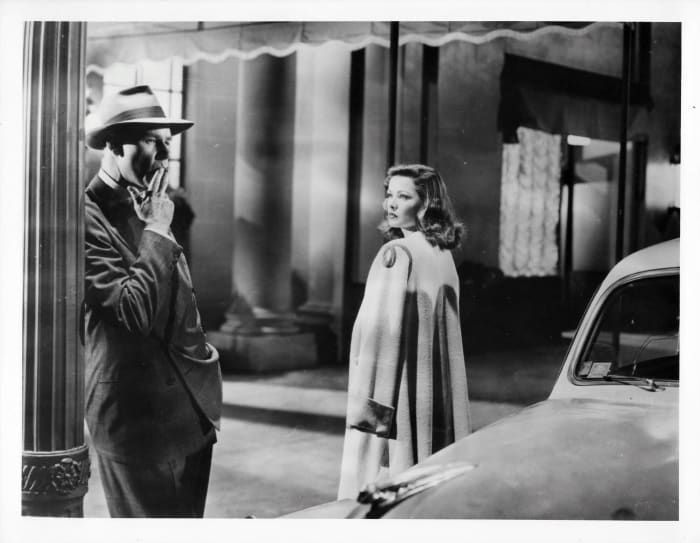
Laura, the title character of the noir of the same name, makes for a rather unusual femme fatale. For much of the film, it’s assumed that she is dead. However, there is no doubt that, like so many other fatales, she exerts a powerful, hypnotic spell over the men in her life, particularly Clifton Webb’s Waldo Lydecker, whose dangerous obsession with her led him to try to kill her (he mistakenly shot someone else). As with so many other dangerous women of film noir, Laura becomes the receptacle of the fears and desires of the men around her.
Kitty Collins ('The Killers')

The Killers, a powerful noir based on a story by none other than Ernest Hemingway, stars two of the most potent screen presences in classic Hollywood: Burt Lancaster and Ava Gardner. The latter is particularly notable as Kitty Collins. If there was ever a Hollywood star born to play a dangerous and beguiling woman, it was Gardner. She endows this ruthless woman with the kind of sultry charisma that would come to define so many of her best roles, and she cast her irresistible spell on both Lancaster’s the Swede and the viewer.
Kathie Moffat ('Out Of The Past')

Out of the Past is one of those noirs which can be difficult to follow at times — with a plot that shifts between past and present — but there is one thing for sure: Jane Greer’s Kathie Moffat is a perfect deadly woman. She is a character who is not only stunningly beautiful (the camera seems to know this, always perfectly framing her) but also knows how to use words to maximum effect. She’s far smarter than any of the men in the film, including her boyfriend Whit Sterling (played by Kirk Douglas) and Jeff Markham (Robert Mitchum), the PI who also falls under her spell, and this is what makes her both so alluring and so dangerous.
Brigid O’Shaughnessy ('The Maltese Falcon')
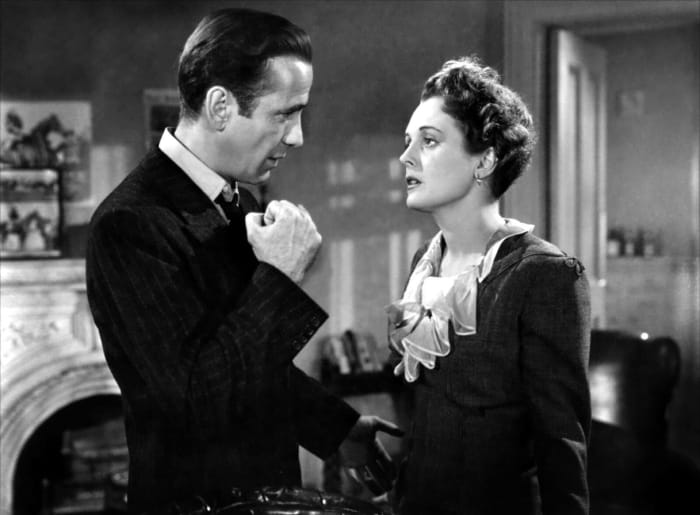
Brigid O’Shaughnessy is, in some ways, the paradigmatic example of the femme fatale, appearing as she does in the enormously influential The Maltese Falcon. On the outside, she looks weak and simpering, but, as is so often the case with noir, there’s much more to her than meets the eye. She’s as cold and cunning as they come, and she knows what it takes to survive in the brutal world of these types of films. Even though she’s very much a villain, there’s also something compelling, even sympathetic, about the way she manages to turn patriarchy against itself.
Alice Reed ('The Woman in the Window')
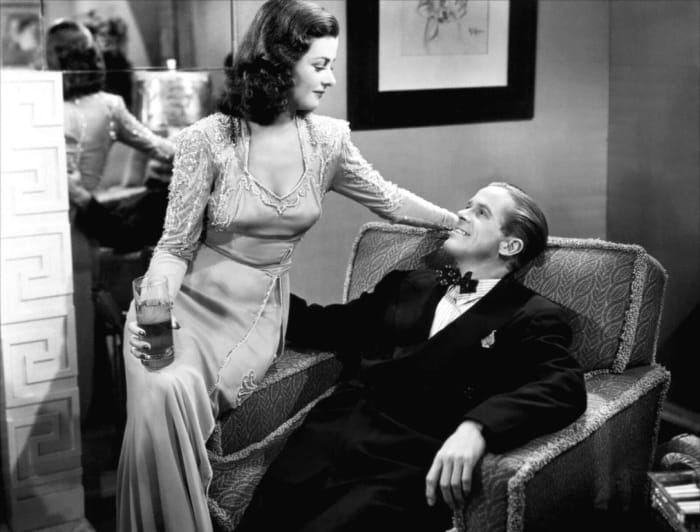
Though many of the dangerous women of classic noir are deadly, others are just alluring, and men’s collective anxiety about female sexuality fills in the blanks. In The Woman in the Window, this phenomenon takes center stage. Joan Bennett plays Alice Reed, a beautiful woman who strikes up a conversation with Edward G. Robinson’s Richard Wanley, only for things to immediately go sideways, with murder and mayhem at every turn. It is ultimately revealed to be a dream, but terrified of Alice in the real world, he runs away from her. In the world of noir, even dreams can be deadly.
Vera ('Detour')
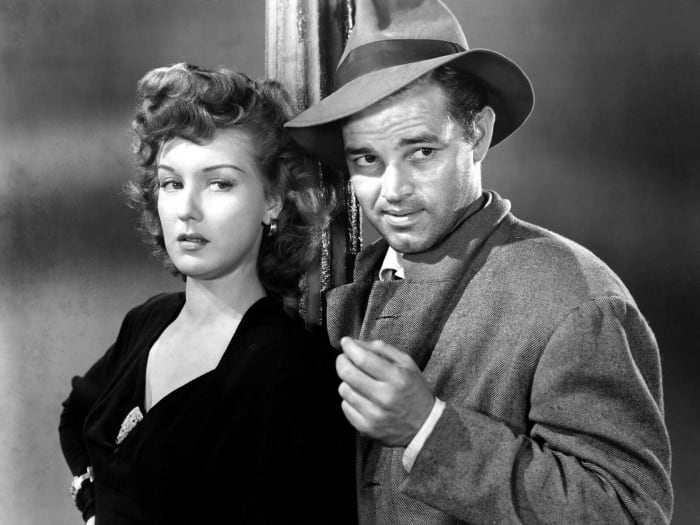
There are few noirs quite as sinister and cynical as Detour, which focuses on a piano player who decides to hitchhike across the country. Unfortunately, things quickly go awry after a man he is riding with dies, and things only get worse when he picks up the hitchhiking Vera. Vindictive, cruel, and avaricious, she is arguably one of the most irredeemable of the many women to haunt the world of film noir. In the end, even death isn’t enough to mitigate her toxic influence on his life, and when he “inadvertently” strangles her with a phone cord, he seals his fate.
Elsa Bannister ('The Lady from Shanghai')
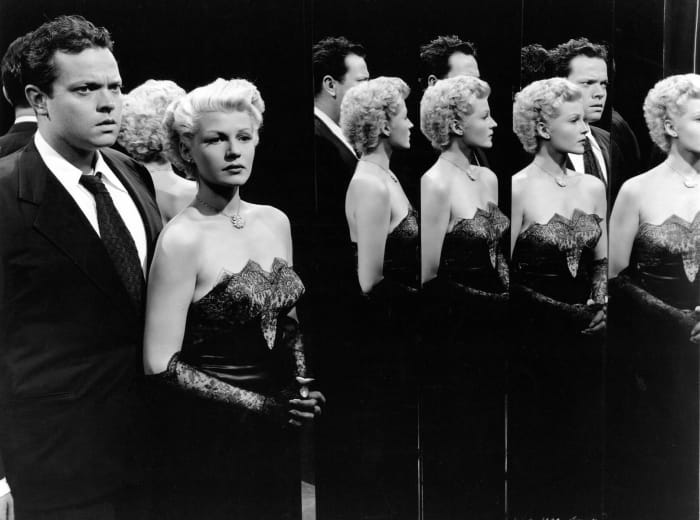
Rita Hayworth excelled at creating fascinating, beautiful, and enigmatic characters, and Elsa Bannister of The Lady from Shanghai is one of her finest creations. Though normally known for her vibrant red hair, Hayworth went blonde for this role, in which she plays the seducer to Orson Welles’ Michael O’Hara (the two were married but estranged at the time). There’s a palpable menace to Elsa, but it would be a mistake to see her as simply evil. Instead, she has been forged into the creature she is by the circumstances of her life, particularly her husband’s cruelty. She can hardly be blamed for finally succumbing to the allure of evil.
Cora Smith ('The Postman Always Rings Twice')
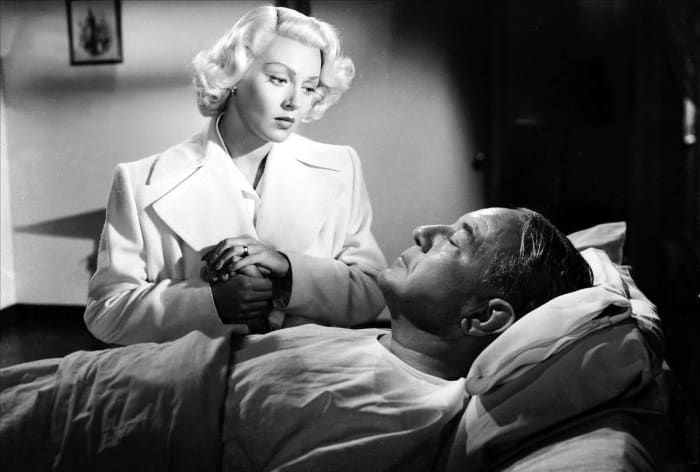
Lana Turner delivers a chillingly cold performance as Cora Smith in The Postman Always Rings Twice. As with so many other femmes fatales, she is a wife trapped in a deeply unhappy relationship, which leads her to ensnare a lover, John Garfield’s Frank Chambers, whom she convinces to murder her husband. Though Turner was often not seen as a particularly strong actress (for all that, she was undeniably a star), she is powerful and arresting as Cora, embodying both the evil and the irresistible beauty that are so much a part of the femme fatale’s enduring hold in the imagination.
Ellen Berent Harland ('Leave Her to Heaven')

Gene Tierney delivers one of the best performances of her career as Ellen Berent Harland, the femme fatale of Leave Her to Heaven, a film noir that is, surprisingly enough, in color (rather than the genre’s usual black and white). Laura is a woman who loves passionately and devotedly, but this also makes her very dangerous, and she repeatedly proves that when she falls for Cornel Wilde’s Richard Harland. The scene where she allows Richard’s brother to drown is superbly chilling, and Tierney aptly captures the cold-hearted ruthlessness of a woman who will do everything in her power to hold onto the man she loves.
Rose Loomis ('Niagara')
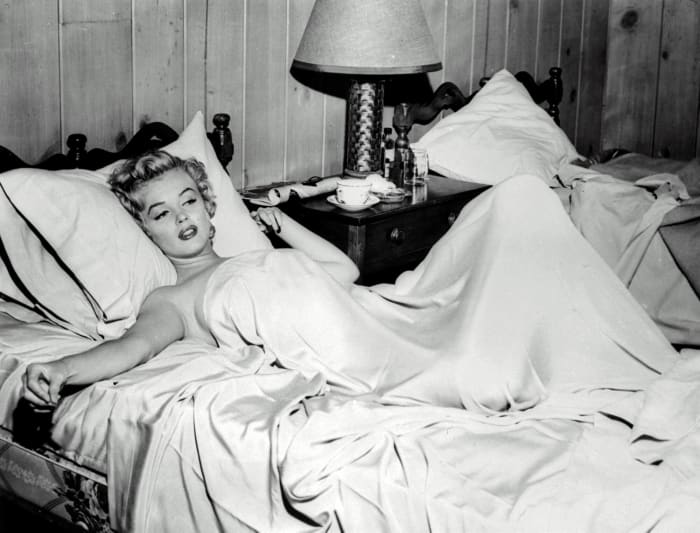
Though she would later become the sex symbol of the 1950s, Marilyn Monroe repeatedly demonstrated that she was actually an actress of remarkable versatility. In Niagara, she plays the femme fatale Rose Loomis, a woman trapped in an unhappy marriage. In fine noir tradition, she tries to get her lover to kill her husband, but the plan backfires, and he ultimately kills her. Monroe makes for a visually striking and irresistibly magnetic femme fatale, both because of her undeniable beauty and the way the camera seems to love her, rendering her both the subject and object of destructive and deadly desire.
Kitty March ('Scarlet Street')

In many noirs, the woman is an undeniably charismatic and alluring figure, someone the hero (and the presumptive viewer) can obsess over. In Scarlet Street, for example, Edward G. Robinson’s Christopher Cross finds himself enchanted by Joan Bennett’s Kitty March, but she, in typical femme fatale fashion, merely exploits him, even going so far as to mock him as old and ugly when he asks her to marry him. Though he kills her in a rage — and succeeds in getting her boyfriend executed for the crime — her death causes Cross’s downfall, and he ends the film tormented by the voices of those whose deaths he has caused. In noir, the femme fatale can continue to cause anguish, even after death.
Laurel Gray ('In a Lonely Place')

Along with her co-star Humphrey Bogart, Gloria Grahame was one of those actresses who became almost synonymous with noir. In Nicholas Ray’s In a Lonely Place, she plays the character of Laurel Gray, who falls in love with Bogart’s Dix Steele, a bitter and hard-hitting screenwriter with a penchant for violence. She is a particularly fascinating example of the femme fatale because she seems dangerous only to Dix, who thinks she has betrayed him when, in reality, she has good reason to suspect him of murder. As so often with noir, how one looks at a woman depends very much on whether one is willing to adopt the perspective of the flawed male hero.
Sherry Peatty ('The Killing')

If there’s one thing that many of the dangerous women of noir have in common, it’s a desire to escape from their boring, often disappointing lives (to say nothing of their pathetic husbands). Sherry Peatty of Stanley Kubrick’s The Killing is a perfect example of this type of femme fatale, the kind of woman who takes sadistic pleasure in tormenting her husband about his inadequacies. However, domineering as she might be, she also has to pay the price for her behavior, and she is ultimately shot and killed. In noir, the dangerous women are rarely left alive to continue making the world a more sinister place.
Helen Grayle/Velma Valento ('Murder, My Sweet')

Helen Grayle/Velma Valento is, along with Phyllis Dietrichson of Double Indemnity, one of the most influential femmes fatales. Like so many of her kind, she is someone comfortable switching identities, with a sinister beauty that blooms like a deadly rose in the dark world of noir. What’s more, she proves herself to be quite handy with a gun, which helps to explain why she has become so paradigmatic as a dangerous woman. Ultimately, she is no match for Dicĸ Powell’s Philip Marlowe. She might be sinister and capable of chameleon-like transformations, but even that can’t save her from the death that inevitably awaits.
Jane Palmer ('Too Late for Tears')
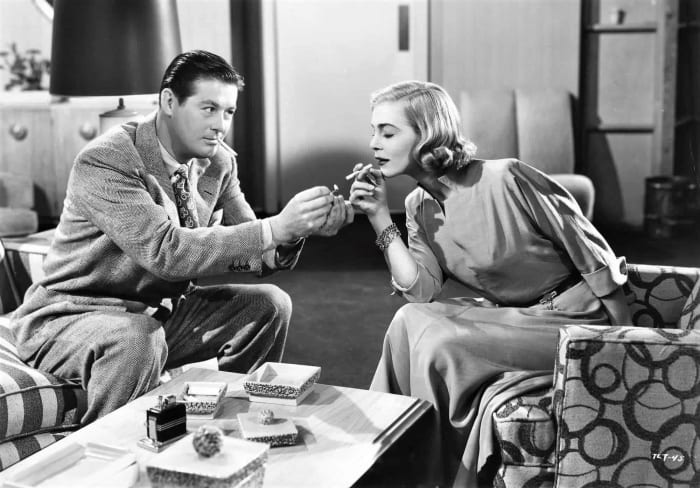
Lizabeth Scott turns in a terrific performance in Too Late for Tears, in which she portrays a woman as deadly as she is beautiful. Jane Palmer is frustrated at her life and its limitations, so she decides to do everything she can to keep possession of a bag of money. Soon, she leaves a trail of bodies in her wake before meeting her dreadful fate at the very end. While there’s no question that Jane is a murderer and avaricious, Scott’s performance allows the viewer to see her as at least somewhat understandable, as she exhibits all of the grasping ambitions of a resurgent post-war middle class.
Madeleine Elster/Judy Barton ('Vertigo')

Though some might not classify Alfred Hitchcock’s Vertigo as a film noir, its story about Scotty (James Stewart), a man who finds himself obsessed with a dangerous and potentially deadly woman, and its broody atmosphere definitely qualifies it. Kim Novak’s stunning and chilling performance is particularly notable as Madeleine Elster/Judy Barton, a woman with many hidden depths and a siren-like allure that leads more than one person to their doom. Her stunning death at the end of the film is, of course, expected of the genre, but in keeping with the film’s noir-ish sensibility, it is also subtly tragic.
Myra Leeds ('Please Murder Me!')

Though she would later become best-known as the intrepid Jessica Fletcher in Murder, She Wrote, Angela Lansbury had a varied career in Hollywood. In the unsubtly titled Please Murder Me!, she plays Myra Leeds, a woman who not only murders her husband but also seduces his best friend, Craig Carlson (Perry Mason), a lawyer who gets her acquitted. Unbeknownst to him, she has plans to run away with her artist boyfriend, leaving him in the lurch. Lansbury endows Myra with a sly vulnerability, and Myra emerges as a woman determined to forge a life on her own terms, even if it does lead to murder. The film’s final frame, of her devastated face (she’s just murdered Craig in cold blood), is a testament to Lansbury’s on-screen appeal.
Debby Marsh ('The Big Heat')

Gloria Grahame repeatedly showed remarkable skill in creating various femme fatales characters, and one notable example is Debby Marsh of The Big Heat. She captures so much of what makes these types of people fascinating, and Debby is very dangerous (she shoots another woman) yet vulnerable. It was, indeed, Grahame’s extraordinary skill to be able to bring out the many contradictory aspects of her characters, and the moment when Debby’s face is hideously burned with a scalding pot of coffee is wrenching to watch. Unlike some other femmes fatales, she does redeem herself, leaving behind Glenn Ford’s police detective, Dave Bannion, to pick up the pieces.
Lilith Ritter ('Nightmare Alley')
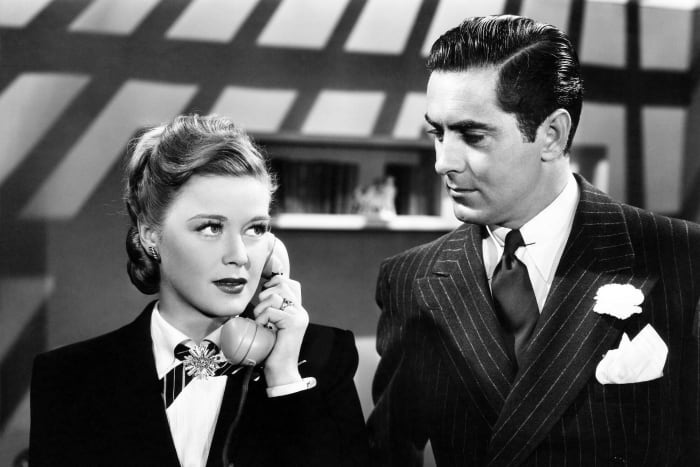
Though Guillermo del Toro’s version of Nightmare Alley might be better known to contemporary audiences, there is still much that is exciting about the 1947 version of the story (both are adapted from the novel of the same name). Of particular note is Helen Walker’s deliciously evil Lilith Ritter, a psychologist who manipulates the film’s tragic antihero, Stan Carlisle, into performing a con with her, only to betray him and take the money she’d promised him. Lilith may not be as deadly as some of her dangerous fellow women, but she is still a perilous figure, luring a man to his doom.
Coral Chandler ('Dead Reckoning')

With her smoky voice and her camera-ready beauty, Lizabeth Scott was the type of actress who seemed born to play in film noir. In the film Dead Reckoning, she is sinister, alluring, and deadly as Coral Chandler, who ensnares Humphrey Bogart’s Rip Murdock in her web. She is truly a deadly woman, and she goes so far as to shoot the film’s antihero as he tries to take her to the police. Unfortunately for her, however, the resultant car crash kills her, though Rip survives. For women like Coral, it seems crime doesn’t pay after all.
Thomas J. West III earned a PhD in film and screen studies from Syracuse University in 2018. His writing on film and TV has appeared at Screen Rant, Screenology, FanFare, Primetimer, Cinemania, and in a number of scholarly journals and edited collections. He co-hosts the Queens of the B's podcast and writes a regular newsletter, Omnivorous, on Substack. He is also an active member of GALECA, the Society of LGBTQ Entertainment Critics.
More must-reads:
- 20 facts you might not know about 'Guardians of the Galaxy Vol. 2'
- Why is CBS moving on from Phil Simms?
- 15 movies and TV shows about country music
Trending in Entertainment
Customize Your Newsletter
 +
+
Get the latest news and rumors, customized to your favorite sports and teams. Emailed daily. Always free!
Use of this website (including any and all parts and
components) constitutes your acceptance of these
Terms of Service and Privacy Policy.

